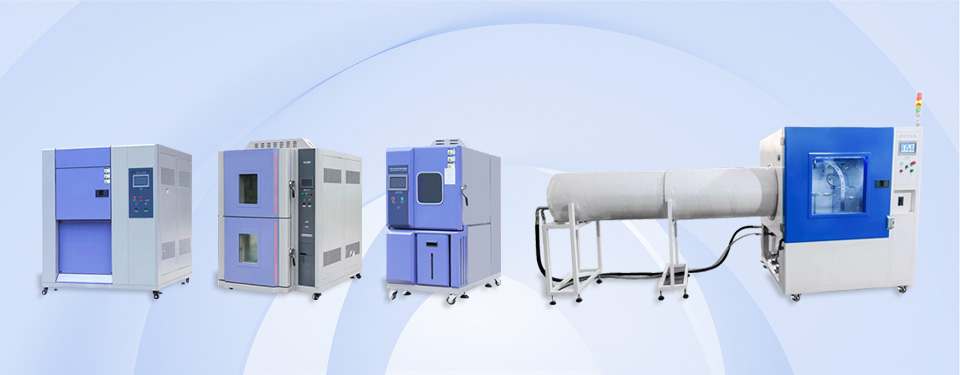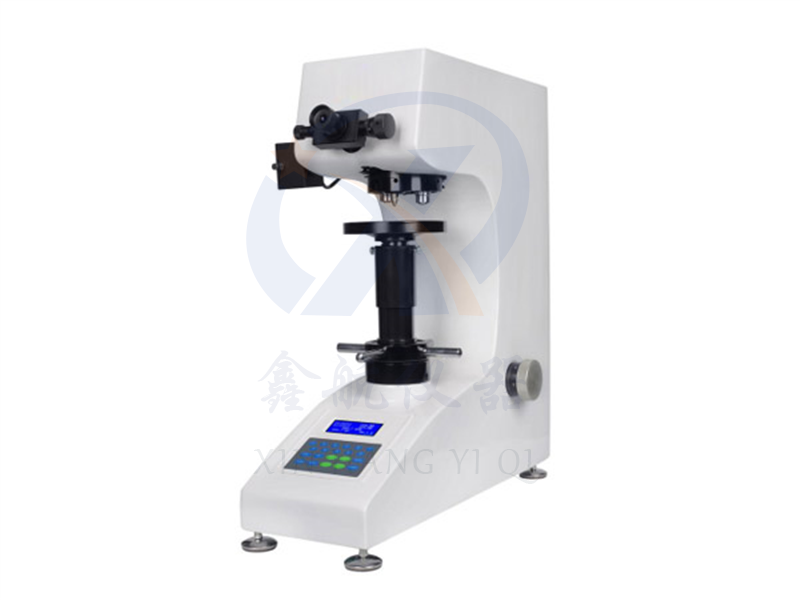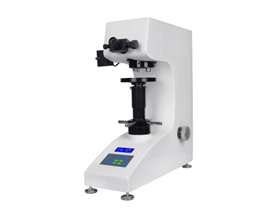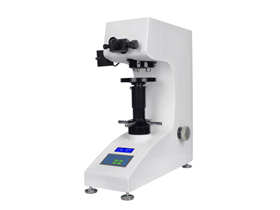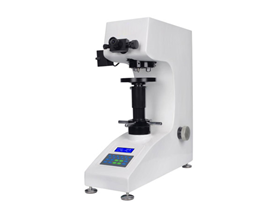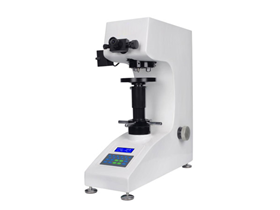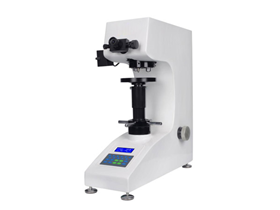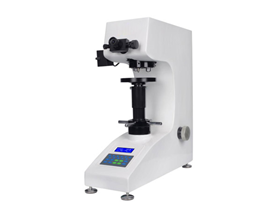Overview:
Integrated cast aluminum body, without deformation or displacement, with a weight loading structure, stable performance, high measurement accuracy, and good repeatability. Hardness conversion function, using LCD display screen, automated testing process, easy operation, high-definition optical system, light source brightness can be adjusted by 20 levels, diagonal length D1 and D2 values can be measured using a micrometer eyepiece, and the hardness value can be displayed on the LCD after pressing the key input. The automatic turret objective and indenter can automatically switch for accurate positioning.
Main functions:
● Using an LCD display screen, the hardness scale HV or HK can be switched;
The experimental process is automated and easy to operate;
The brightness of the high-definition optical system light source can be adjusted by 20 levels;
Multiple hardness standard conversion functions;
Measure the diagonal lengths D1 and D2 using a micrometer eyepiece, and press the key to display the hardness value on the LCD;
The objective lens and pressure head can automatically switch for precise positioning
Main functions:
Suitable for testing metal structures, including small parts, thin sheets, metal foils, wires, thin hardened layers, and electroplated coatings. It can also be used to test non-metallic materials such as glass, ceramics, etc. that cannot be tested using the Rockwell test method and other relatively high test forces. It can follow the structure of metals and test the internal hardness of materials such as induction hardening or carburization.
Vickers test principle:
The Vickers hardness test is conducted by using a 136 ° diamond indenter to press a specified test force (F) into the surface of the tested object. After maintaining the test force for a specified period of time, the test force is removed, and the diagonal (d) of the indentation on the surface of the specimen is measured using a micrometer eyepiece. The average pressure (N/mm2) borne by the conical surface area of the indentation is calculated, which is the Vickers hardness value. (See Figure 1.1 for details).
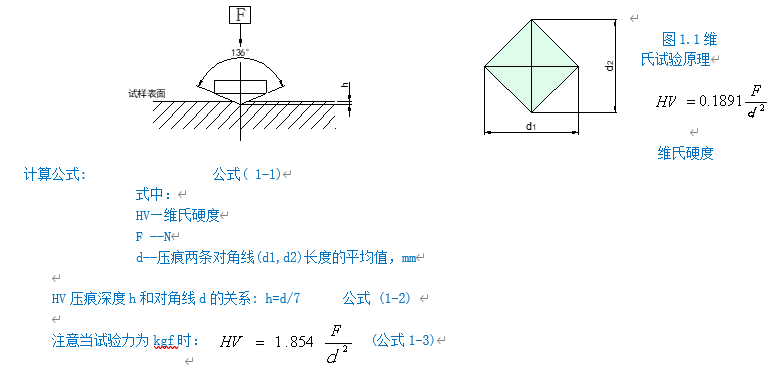
Technical data:
|
model
|
HV30Z(Automatic turret)
|
|
Experimental force
|
1Kgf3Kgf5Kgf10Kgf20Kgf30Kgf
|
|
Exchange Scales
|
HRAHRBHRCHRDHRFHVHK HBW HR15NHR30NHR45NHR15THR30THR45T
|
|
measuring range
|
8-3000HV
|
|
Minimum measurement unit
|
0.5μM(Matched with objective lens)
|
|
Duration Time
|
5~60s
|
|
measurement accuracy
|
Meet or exceedGB/T4340.2
|
|
Total magnification
|
observation100X measure200X
|
|
Measurement method
|
Scale input
|
|
loading control
|
Automatic (loading, holding, unloading)
|
|
Instrument weight
|
about45kg
|
|
Maximum size of the specimen
|
Maximum height165mm From the center of the pressure head to the inner wall130mm
|
|
source
|
AC220V±5%,50~60Hz
|
|
Execution standards
|
GB/T4340.2national standards JJG151Verification regulations
|
|
Optional Accessories
|
XYWorkbench(Customized)CCDMeasurement system, Knoop indenter, fine wire clamping table
|
Appendix 1
|
hardness
symbol
|
maximum error
Represented as a percentage of the specified hardness value for a standard block
|
|
Hardness,HV
|
|
50
|
100
|
150
|
200
|
250
|
300
|
350
|
400
|
450
|
500
|
600
|
700
|
800
|
900
|
1000
|
1500
|
|
HV0.1
|
5
|
6
|
7
|
8
|
8
|
9
|
10
|
10
|
11
|
|
|
|
|
|
|
|
|
HV0.2
|
|
4
|
|
6
|
|
8
|
|
9
|
|
10
|
11
|
11
|
12
|
12
|
|
|
|
HV0.3
|
|
4
|
|
5
|
|
6
|
|
7
|
|
8
|
9
|
10
|
10
|
11
|
11
|
|
|
HV0.5
|
|
3
|
|
5
|
|
5
|
|
6
|
|
6
|
7
|
7
|
8
|
8
|
9
|
11
|
|
HV1
|
|
3
|
|
4
|
|
4
|
|
4
|
|
5
|
5
|
5
|
6
|
6
|
6
|
8
|
|
HV2
|
|
3
|
|
3
|
|
3
|
|
4
|
|
4
|
4
|
4
|
4
|
5
|
5
|
6
|
|
HV3
|
|
3
|
|
3
|
|
3
|
|
3
|
|
3
|
4
|
4
|
4
|
4
|
4
|
5
|
|
HV5
|
|
3
|
|
3
|
|
3
|
|
3
|
|
3
|
3
|
3
|
3
|
3
|
4
|
4
|
|
HV10
|
|
3
|
|
3
|
|
3
|
|
3
|
|
3
|
3
|
3
|
3
|
3
|
3
|
3
|
|
HV20
|
|
3
|
|
3
|
|
3
|
|
3
|
|
3
|
3
|
3
|
3
|
3
|
3
|
3
|
|
HV30
|
|
3
|
|
3
|
|
2
|
|
2
|
|
2
|
2
|
2
|
2
|
2
|
2
|
2
|
|
HV50
|
|
3
|
|
3
|
|
2
|
|
2
|
|
2
|
2
|
2
|
2
|
2
|
2
|
2
|
|
HV100
|
|
|
|
3
|
|
2
|
|
2
|
|
2
|
2
|
2
|
2
|
2
|
2
|
2
|
|
Note:
1.When the diagonal of the indentation is less than0.020mmWhen, the table does not provide error values.
2.For the median, its maximum allowable error can be obtained by interpolation.
3.The median in the table is represented by0.001mmOr the average diagonal value of the indentation2%The maximum error is given, whichever is greater.
|
|
The content in the table is excerpted fromGB/T4340.2.
|
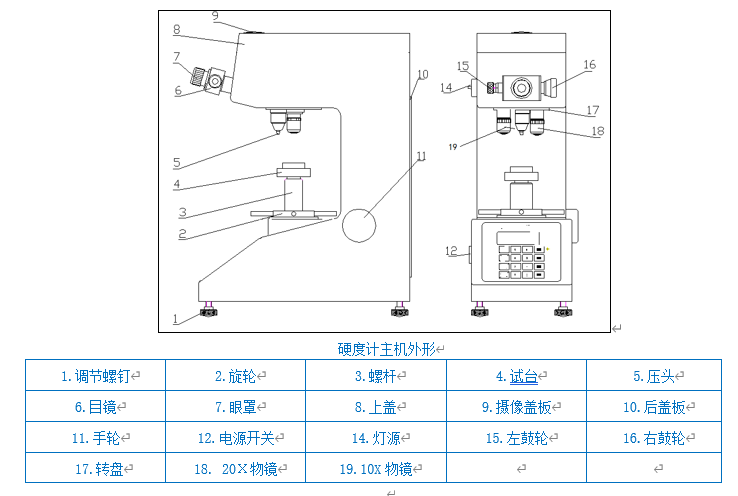
Introduction to panel key functions:
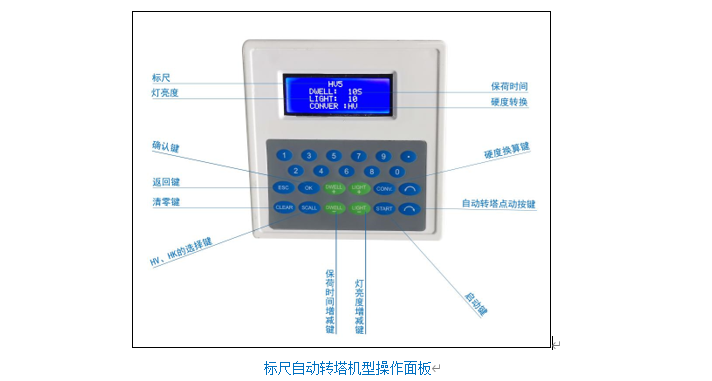
Use of hardness tester:

Specific measurement method for indentation:
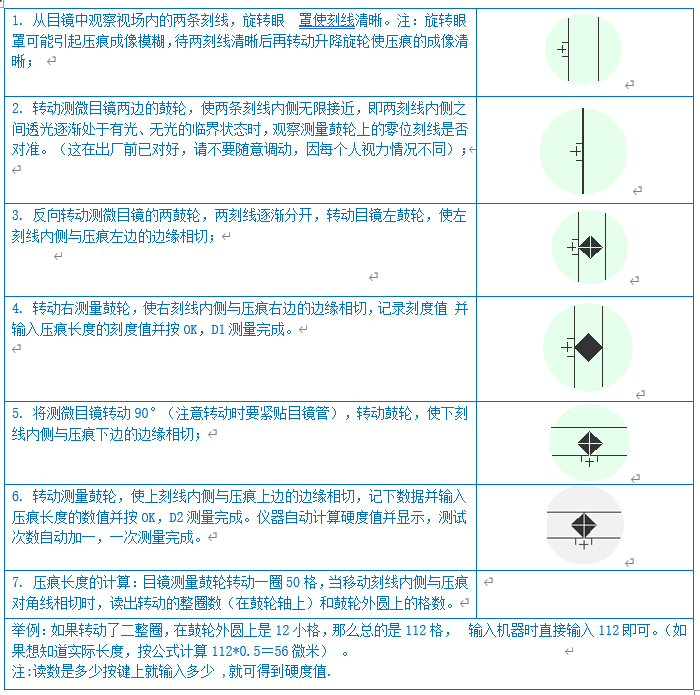
The hardness tester meets the standard:
GB/T4340.1-1999 GB/T 4340.1-1999 Metallic Vickers Hardness Test Part 1: Test Methods
GB/T4340.2-1999 GB/T 4340.2-1999 Metallic Vickers Hardness Test Part 2: Verification of Hardness Machines
International standard ISO 6507-2:2018 "Vickers hardness test for metallic materials - Part 2: Verification and calibration of hardness testers"
ASTM E384-17 Standard Test Method for Knoop and Vickers Hardness of Materials
JJG151- Verification regulation of metal Vickers hardness tester
Standard configuration
|
name
|
quantity
|
name
|
quantity
|
|
Instrument host
|
1platform
|
objective lens20x10x,
|
various1only
|
|
Vickers indenter
|
1only
|
Large, medium“V”Test bench
|
various1only
|
|
Weights(30KG)
|
3only
|
10Micrometer eyepiece
|
1only
|
|
Vickers hardness block
|
2block
|
Product Qualification Certificate
|
1share
|
|
Power cord
|
1root
|
Product User Manual
|
1share
|



